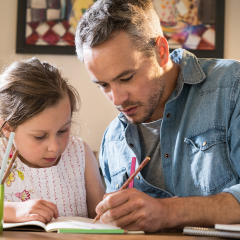Introduction
It is estimated that between 5 and 17% of pupils in our schools have dyslexia though in many cases it has not yet been diagnosed. Owing to their difficulties with reading and writing many of these pupils are falling behind their peers. This means that they may well fall within the lowest achieving 20% of pupils and will therefore be a focus in an Ofsted Inspection.
Teaching strategies and approaches
- Ensure there are opportunities for revision and overlearning
- When displaying reading material, such as a PowerPoint presentation, break it up using headings and bullet points
- Check which colour background works well for pupils and use that for presentations and when printing worksheets and activities
- Provide opportunities for pupils to demonstrate their learning without having to produce a lot of writing, for example giving an oral response, labelling a diagram, dictating their response
- Provide scaffolds and support both for work and for personal organisation e.g. writing frames, visual timetables
- Keep instructions to a minimum, breaking them into small steps. Where possible invite the pupil to repeat them back to you to check they have remembered them
Classroom environment
- Ensure resources are well-labelled and easily accessible. Where possible provide visual prompts, for example a picture of a rulers on the drawer containing rulers
- Keep wall displays simple and clearly labelled – cluttered displays may lead to distraction and visual overload
- Invest in reading materials which are high interest but low reading age
- Seat dyslexic pupils where they can easily see the teacher, the whiteboard and any wall mounted resources they will need to refer to.










